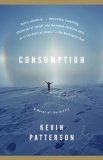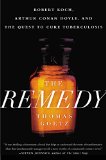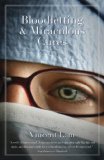Summary | Excerpt | Reading Guide | Reviews | Beyond the book | Read-Alikes | Genres & Themes | Author Bio

At first glance the title of this
exceptional first novel would seem to refer to the
common name for tuberculosis, so named because the
infection appears to consume people from within.
However, as the novel progresses, consumption takes
on a different meaning as we see the Inuit way of
life and even the land they live on being consumed
by "civilization" and the quest for profit.
Consumption centers on the lives of one small
family in a small community of Inuits living in
Rankin Inlet between the 1970s and 1990s. By the end
of the 1980s, almost all the Inuits in the area had
left their nomadic lives behind in order to work in
the mines run by Kablunauks (the Inuit word
for Caucasians, meaning hairy eyebrows and bellies),
a movement that was expedited by the tuberculosis
epidemic. Thus, in one generation, a lifestyle that
developed over more than 3,000 years came to an end.
The story centers on Victoria, an Inuit girl who was
born and grew up on the land in the 1950s. At the
age of 10 she contracted tuberculosis and was sent
away by the local doctor to a sanitarium far from
home. Six years later she returns to find that she
is a stranger to her own people - not just because
she has spent six formative years living and
learning in the south but because the culture she
left behind has changed so radically. Marriage to an
Englishman who manages the local mine calms
Victoria's identity-crisis for a while, but as the
years go by and her children grow and start
establishing their own identities, she and they find
themselves straddled dangerously across the cultural
divide.
Secondary storylines tell of the Kablunauks
who come to work in Rankin Inlet - often escaping
former lives for one reason or another and
sometimes, unexpectedly, finding new life in the far
north. Another storyline traces the lives of Rankin
Inlet doctor Keith Balthazar (whose fascinating
diary entries, essentially non-fiction essays on the
philosophy and history of various aspects of
medicine, intersperse the narrative) and his teenage
niece Amanda, who lives in the United States. At
first Amanda's story seems somewhat superfluous to
the whole but her role comes clear as the novel
progresses because it is through her that we see
that the feelings of dislocation and generational
alienation felt by the Inuit are not unique to them
but a facet of modern life - except that the effect
is obviously more extreme in a culture that has gone
from hunter-gatherer to the internet in one
generation.
![]() This review was originally published in The BookBrowse Review in August 2007, and has been updated for the
August 2008 edition.
Click here to go to this issue.
This review was originally published in The BookBrowse Review in August 2007, and has been updated for the
August 2008 edition.
Click here to go to this issue.

If you liked Consumption, try these:

by Thomas Goetz
Published 2015
The riveting history of tuberculosis, the world's most lethal disease, the two men whose lives it tragically intertwined, and the birth of medical science.

Bloodletting & Miraculous Cures
by Vincent Lam
Published 2008
Bloodletting & Miraculous Cures invites us into a world where the ordinary becomes the critical in a matter of seconds. A formidable debut, it is a profound and unforgettable depiction of today’s doctors, patients, and hospitals.
Your guide toexceptional books
BookBrowse seeks out and recommends the best in contemporary fiction and nonfiction—books that not only engage and entertain but also deepen our understanding of ourselves and the world around us.